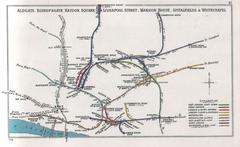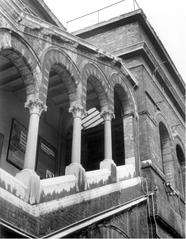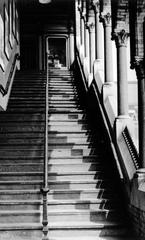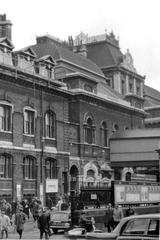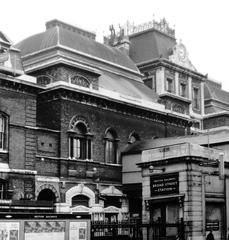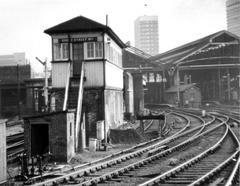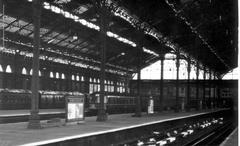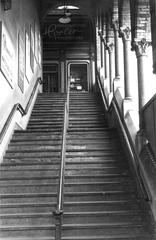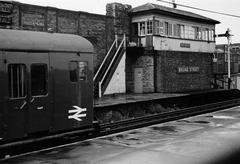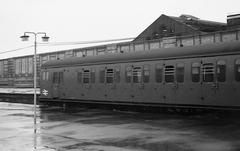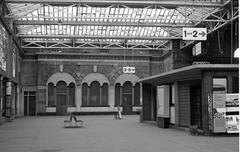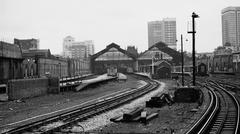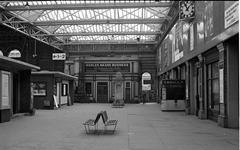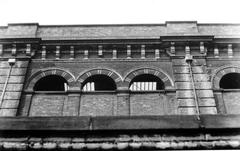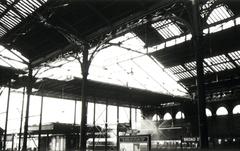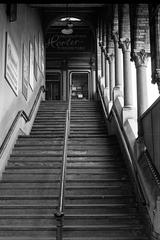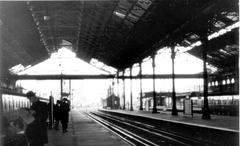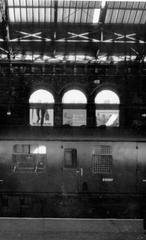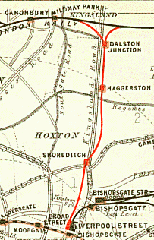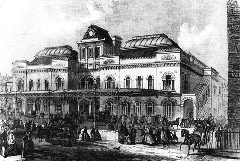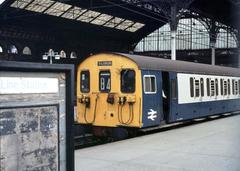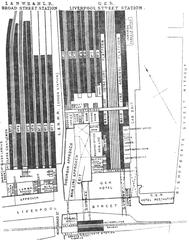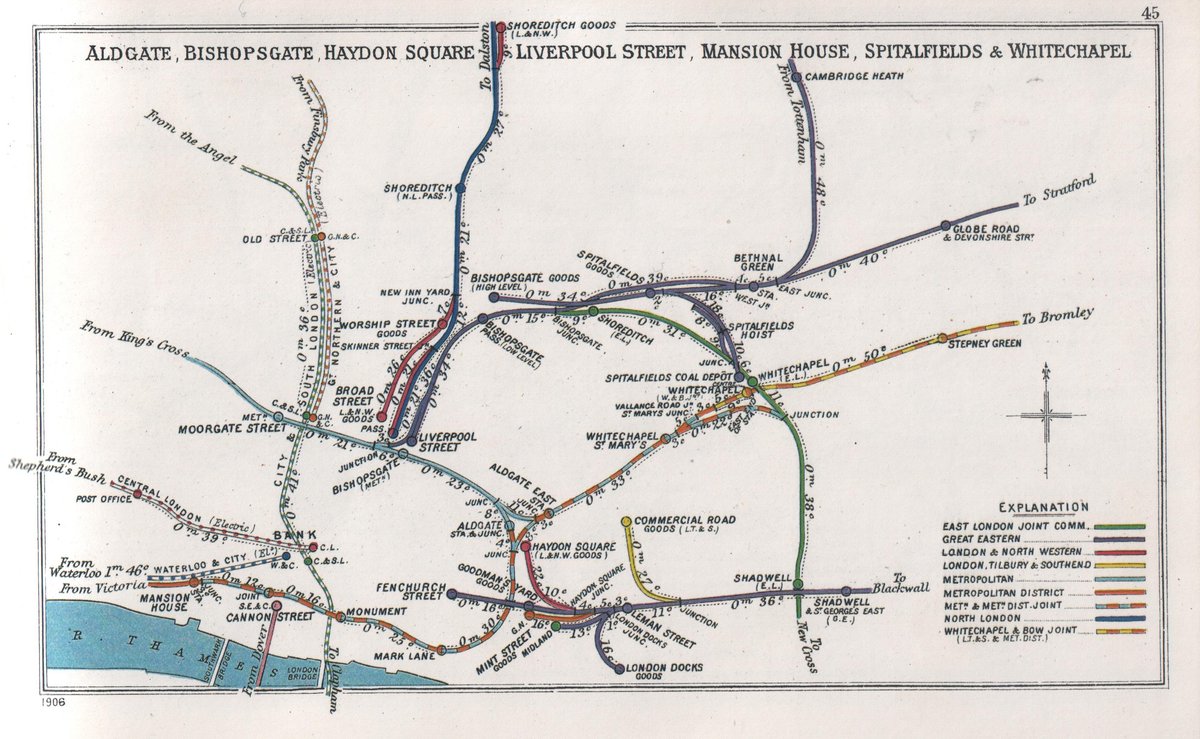
Broad Street Railway Station, London: Visiting Hours, Tickets, and Historical Significance
Date: 15/06/2025
Introduction
Broad Street Railway Station was once a vital component of London’s Victorian-era rail network, celebrated for its French Renaissance and Italianate architecture and its role as a bustling commuter and freight terminus. Opened in 1865 as the City of London terminus for the North London Railway, Broad Street quickly rose to prominence, becoming one of the capital’s busiest stations by the early 20th century. Despite its significance, the station suffered wartime damage, faced decades of decline, and was ultimately closed and demolished in the mid-1980s. Today, while the station itself is gone, its legacy endures through the Broadgate complex, the repurposed Kingsland Viaduct, and within London’s cultural and transport memory. This guide explores the history, architectural features, visitor information, and enduring cultural impact of Broad Street Railway Station, and provides practical tips for exploring its historic site and surroundings (A London Inheritance; Disused Stations; Urban75; Wikipedia).
Contents
- Introduction
- History and Architectural Design
- Cultural Significance and Legacy
- Visiting the Former Site: What to See and Do
- Accessibility and Travel Tips
- FAQ
- Key Highlights and Anecdotes
- Conclusion
- Sources and Further Information
History and Architectural Design
Origins and Development
Broad Street Railway Station opened in 1865 as the City of London terminus for the North London Railway. Designed primarily by William Baker, the station showcased grand French Renaissance and Italianate architectural styles, with a notable iron train shed roof, a timber-roofed booking hall, and an expansive concourse. Its vertical construction cleverly accommodated urban constraints, with hydraulic lifts transporting goods between levels (Wikipedia).
Growth and Peak Usage
The station expanded rapidly to meet growing demand: a fourth approach line was added in 1874, and by 1913 the number of platforms increased to nine. Covered stairways and footbridges improved passenger flow. By 1902, Broad Street was London’s third busiest station, serving over 27 million passengers annually. The concourse thrived with shops, a renowned buffet, and even a working scale model locomotive, reflecting the era’s urban optimism (Disused Stations; A London Inheritance).
Decline and Demolition
The rise of alternative transport modes—trams, buses, and the Underground—gradually diminished Broad Street’s importance. The station suffered severe damage during World War II, leading to the closure of the main building in 1957 and reliance on temporary concourse huts. Despite escaping the Beeching cuts, the station’s decline continued until its closure in 1986. The site was soon redeveloped as the Broadgate office and retail complex, with only the Kingsland Viaduct and some street layouts serving as tangible reminders of its railway past (Wikipedia; A London Inheritance).
Cultural Significance and Legacy
Urban and Social Impact
At its peak, Broad Street Station was a key artery for London’s working population, facilitating the movement of people and goods into the heart of the financial district. Its affordable fares helped foster suburban growth and social mobility, while its decline mirrored the shifting patterns of urban transit and the challenges of maintaining Victorian infrastructure.
Heritage and Memory
The demolition of Broad Street Station is regarded as a significant loss for London’s architectural and transport heritage. Nonetheless, its legacy persists in the adaptive reuse of railway infrastructure (such as the Kingsland Viaduct, now part of the London Overground), continued reference in local street names, and in popular memory. The station also had a brush with pop culture—Paul McCartney’s 1984 album and film “Give My Regards to Broad Street” were named in its honor (Urban75; MyLondon).
Visiting the Former Site: What to See and Do
Broadgate Complex
The site of the former Broad Street Station is now home to the Broadgate complex, a vibrant business, retail, and leisure district. While no original station buildings remain, the area features public art, landscaped squares, and contemporary architecture that nod to the site’s industrial past (Toolbox Marketing; Sir Robert McAlpine).
- Exchange Square: Landscaped gardens and water features behind Liverpool Street Station.
- Broadgate Circle: Dining, cafes, and bars in a lively public plaza.
- Public Art: Notable pieces like the Broadgate Venus and Hare in a Hat sculpture.
Historic Streets and Landmarks
- Old Broad Street and New Broad Street: Historic streets reflecting the area’s railway heritage and home to notable buildings like Tower 42 and the City of London Club (London Office Space).
- Nearby Churches: All Hallows-on-the-Wall and St Margaret Lothbury.
- Threadneedle Street: Financial landmarks such as the Royal Bank of Scotland and Bank of England.
Museums and Heritage Sites
- London Transport Museum: Explore London’s rail history in depth (London Transport Museum).
- Museum of London: Contextualizes the city’s urban and transport evolution (Museum of London).
- Walking Tours: Consider guided walks focusing on the City’s railway and architectural history.
Kingsland Viaduct
The Kingsland Viaduct, once part of Broad Street’s approach lines, now serves the London Overground and offers a living connection to the station’s past (Grace’s Guide).
Accessibility and Travel Tips
- Getting There: The Broadgate area is best accessed via Liverpool Street Station (Central, Circle, Hammersmith & City, Metropolitan, and Elizabeth lines, plus National Rail). Bank and Moorgate stations are also nearby.
- Visiting Hours: The Broadgate complex is open daily from early morning until late evening. Shops and restaurants generally operate from 8 AM to 10 PM. There are no tickets or entry fees for public spaces.
- Accessibility: The district is fully accessible, with step-free routes, lifts, and accessible toilets throughout Broadgate and Liverpool Street Station.
- Facilities: Dining, shopping, restrooms, and public art installations are all available within the Broadgate complex and Liverpool Street Station.
FAQ
Q: Can I visit Broad Street Railway Station today?
A: No, the station was demolished in the 1980s. The site is now the Broadgate complex, which is open to the public.
Q: Are there any remnants of the original station?
A: While no above-ground structures remain, the Kingsland Viaduct and local street names preserve aspects of the station’s legacy.
Q: Do I need tickets to visit the site?
A: No tickets are required to explore Broadgate’s public areas. Some events or exhibitions may have separate ticketing.
Q: Is the area accessible for visitors with disabilities?
A: Yes, Broadgate and Liverpool Street Station offer step-free access and other accessible facilities.
Q: Are there guided tours focusing on Broad Street Station?
A: While there are no official tours dedicated solely to Broad Street, many local walking tours of the City cover the station’s history and the surrounding area.
Key Highlights and Anecdotes
- At its peak in 1902, Broad Street Station handled over 27 million passengers per year.
- The station featured unique amenities, such as a working model locomotive and a Lombardic buffet.
- Paul McCartney’s “Give My Regards to Broad Street” was inspired by the station and filmed there prior to its demolition (MyLondon).
- The adaptive reuse of the Kingsland Viaduct for the Overground and artists’ studios serves as a tangible link to the past.
Conclusion
Broad Street Railway Station’s journey from Victorian grandeur to modern redevelopment reflects the broader story of London’s constant evolution. While the station itself has vanished, its architectural innovation, role in suburban expansion, and cultural resonance live on through the Broadgate complex, the Overground network, and in the city’s collective memory. Visitors to the area today can explore a vibrant blend of history and modernity—whether by relaxing in Exchange Square, discovering public art, or learning more at nearby museums. Broad Street’s story is a testament to the interplay of heritage and progress in London, offering rich insights for railway enthusiasts, historians, and curious visitors alike.
For further exploration, consider visiting the London Transport Museum, joining a walking tour, or downloading the Audiala app for audio guides that bring London’s railway history to life.
Sources and Further Information
- A London Inheritance
- Disused Stations
- Urban75 - Remembering Broad Street Station
- Wikipedia - Broad Street railway station (England)
- Toolbox Marketing
- MyLondon
- Sir Robert McAlpine
- London Office Space
- Grace’s Guide
- Broadgate
- London Transport Museum
- Museum of London
- National Rail Enquiries
- Transport for London
